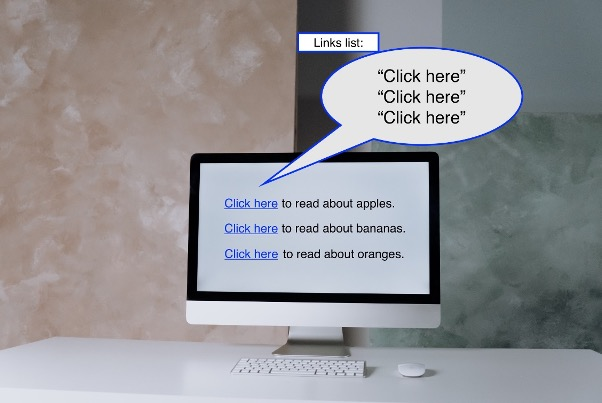Picture this—you’re reading through a website trying to find a link to a resource that you urgently need, but all the hyperlinks that you encounter say “Click here” or “Read more.” You don’t know what the links are about.
This is a real dilemma faced by users who have visual impairments and use screen reader software that reads information from a computer or mobile device screen out loud. Screen reader users can choose an option to hear a list of all the links on the page to quickly find what they need.
 However, uninformative link text will be read by itself, without the context of the additional words in the sentence. A screen reader might read out loud a list of links that says, “Click here, Click here, Click here,” or “Read more, Read more, Read more,” rather than “Read more about accessibility,” for example.
However, uninformative link text will be read by itself, without the context of the additional words in the sentence. A screen reader might read out loud a list of links that says, “Click here, Click here, Click here,” or “Read more, Read more, Read more,” rather than “Read more about accessibility,” for example.
This article from UC Tech News highlights the importance of using descriptive link text instead of generic terms like "Click here" or "Read more." It explains how non-descriptive links can create accessibility barriers, particularly for users relying on screen readers, and emphasises the benefits of meaningful, clear link text for all users. It also provides practical tips and examples for improving accessibility in website and document links, contributing to a more inclusive digital experience.






